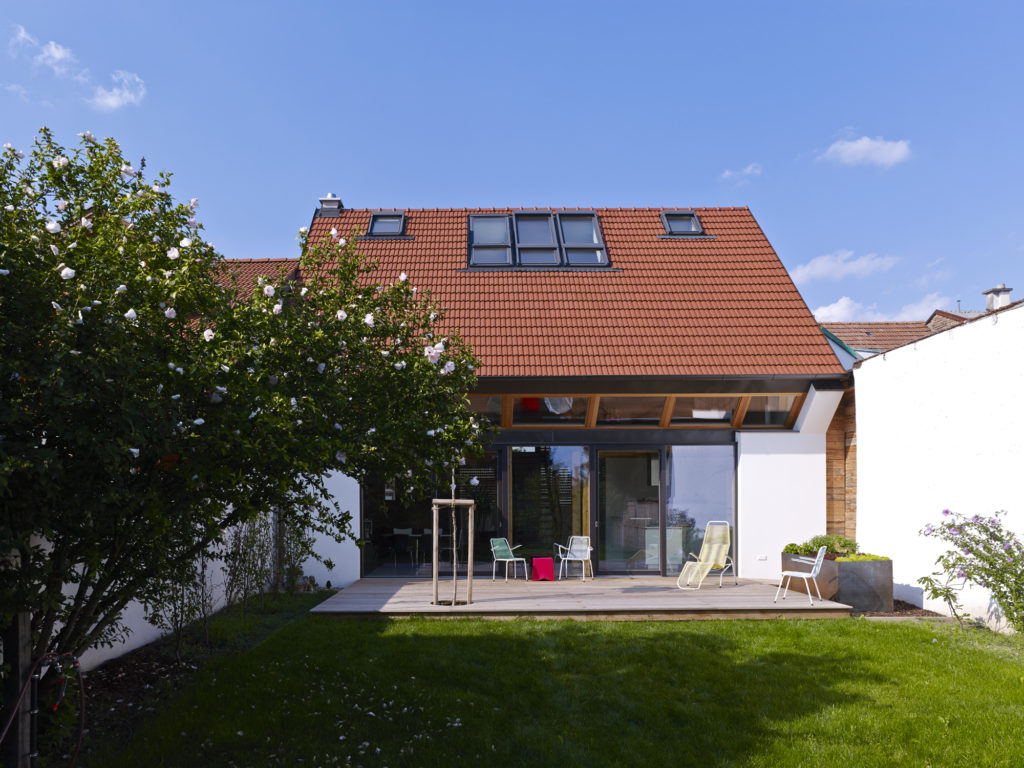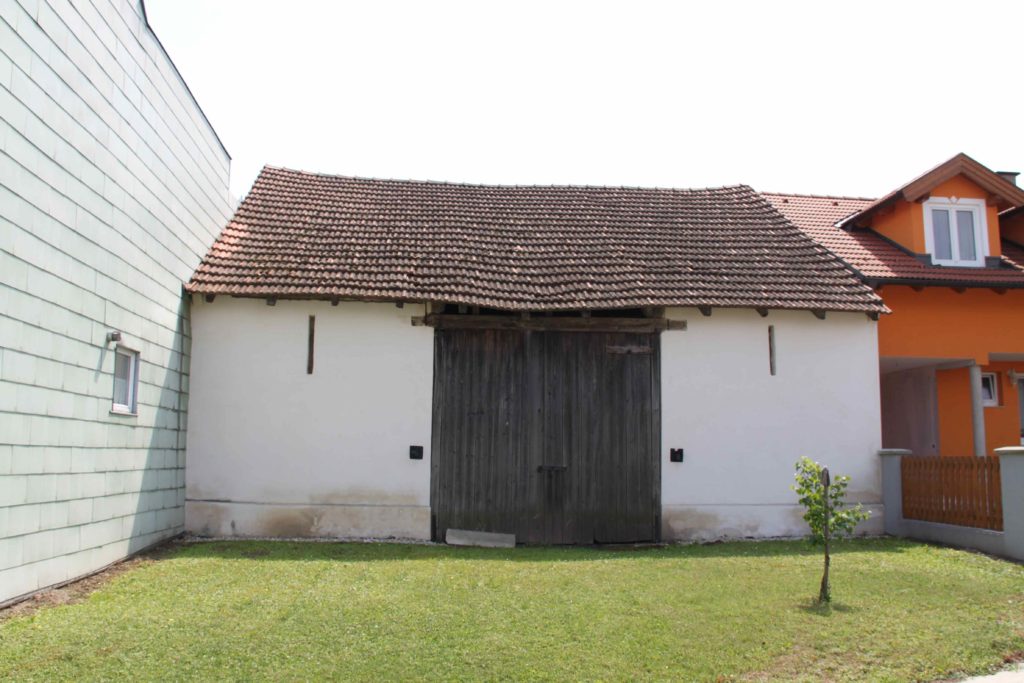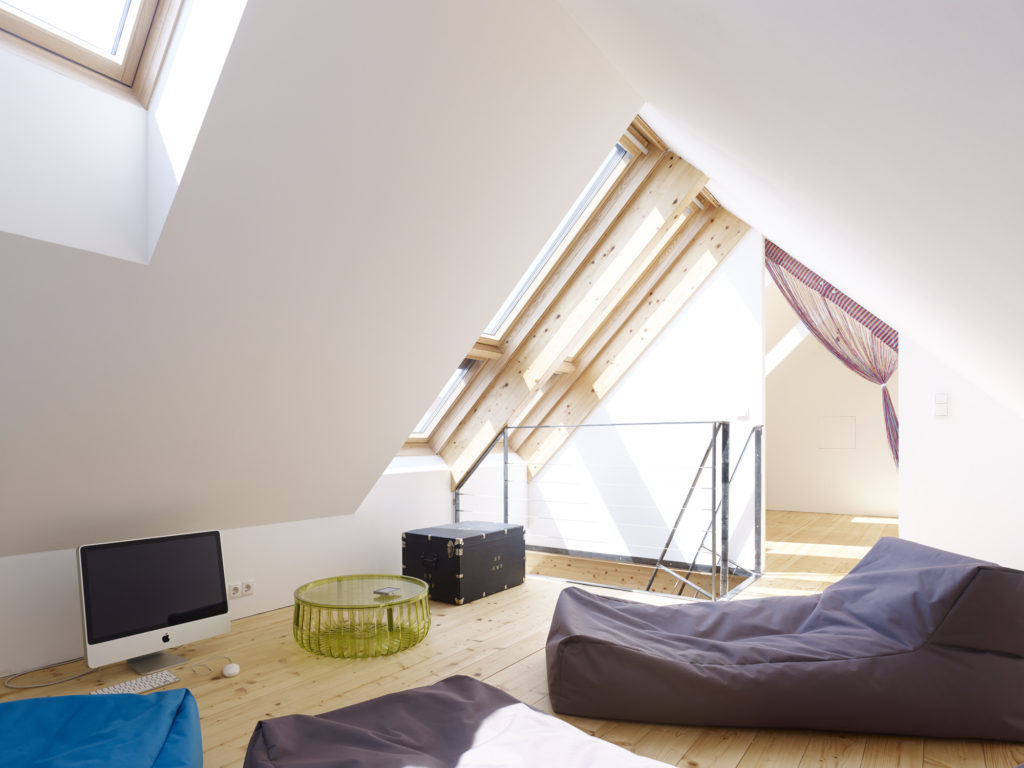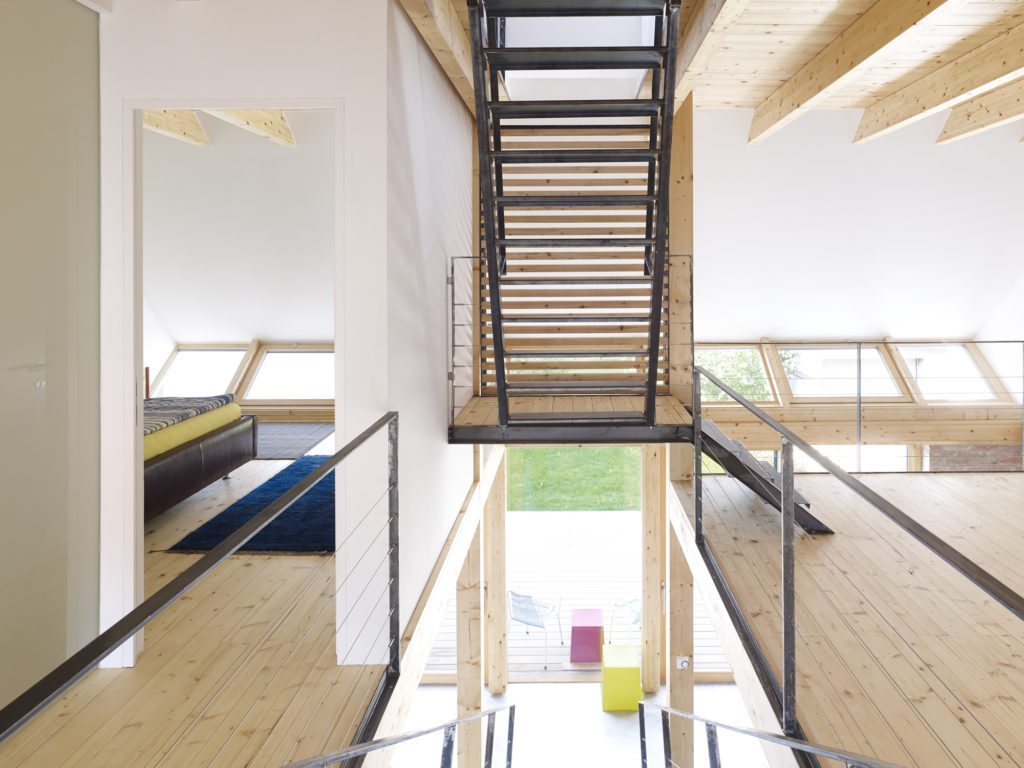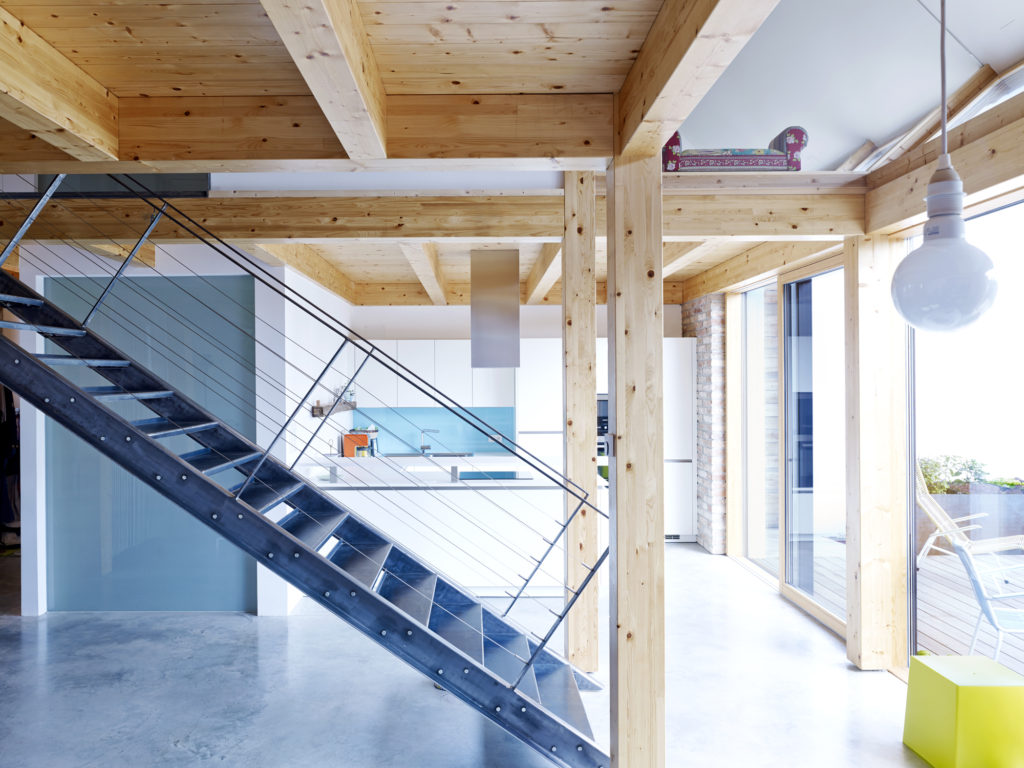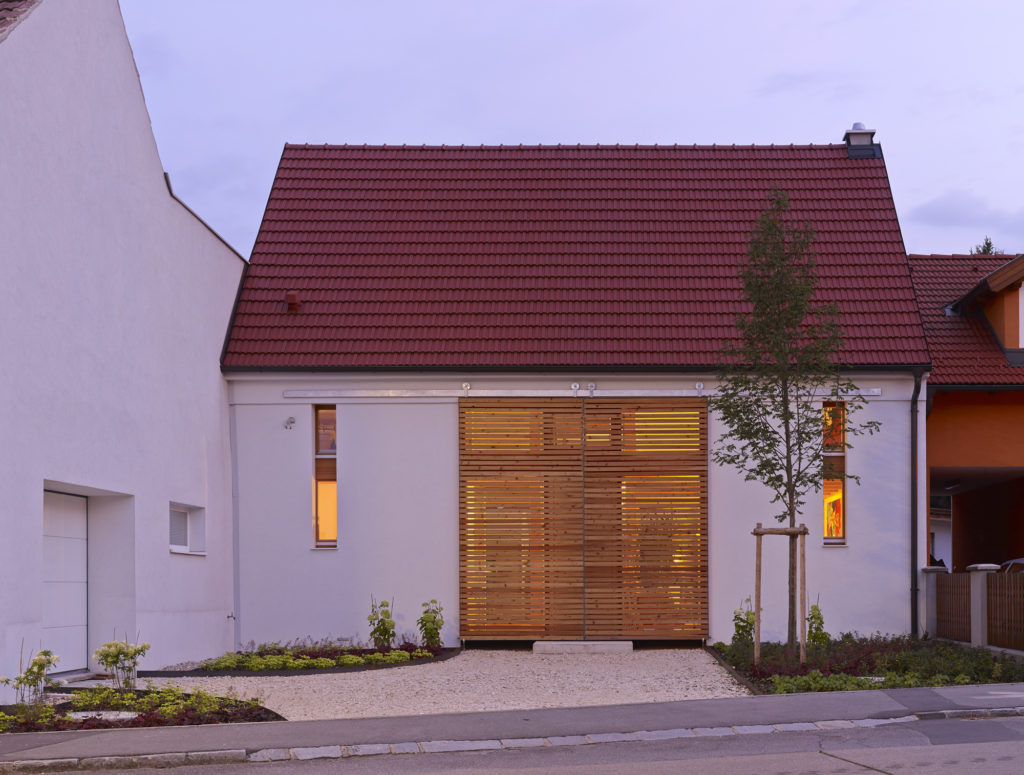zu-haus
The aim of the building technology concept was to find a simple but effective technical solution – in other words, a robust, userfriendly and low-tech concept.
· A building envelope with a high level of thermal insulation assures high conservation of heat.
· The targeted use of solar gains through the glazing on the southern side, in combination with storage mass, reduces residual heat requirements to a minimum.
· Heat is supplied by an existing gas-fired condensing boiler located in the neighbouring parents’ home and a wood-burning stove in the living area. The heat is distributed through low-temperature floor and wall heating.
· Controlled domestic ventilation has been avoided deliberately − automatic window ventilation is used instead
Daylight
· The clear goal was to provide the living areas with a sufficient amount of daylight even
on dull days, which are quite common in the Weinviertel region during autumn and winter when there is often fog.
· Thanks to this deliberate use of zenith light (light from above), light can even reach the rear areas of the ground floor through the gallery floor and thus create balanced lighting.
Ventilation
· It was the building owners’ express wish not to install a mechanical ventilation system.
· ideal positioning of the necessary supply and exhaust air openings in the form of facade and roof windows. As a result, the ventilation drive (chimney effect) gives maximum benefit with no energy consumption.
· Project zu-haus was seamlessly integrated into the close-density housing culture of this typical Weinviertel village.
· On the inside, too, the analogy of a contemporary interpretation of a barn is continued: pillars, supporting structure, wood beam ceilings and the roof are all made of wood.
· Traditional materials were used throughout: wood, brick, iron and stone. Everything is characterised by its durable, calm and pleasant radiance. The architect, Martin Rührnschopf, refers to this as “truthfulness”, which means relying on natural materials and handcraft.
zu-haus
The wine village of Auersthal in the Weinviertel region is still characterised by dense and enclosed housing in the village centre, a beautiful alley lined with wine cellars and a gentle, hilly landscape. On the outskirts of the village, squeezed between the neighbouring buildings, a barn typical of that region has survived – though in bad shape, unfortunately.
The Döllinger-Tsao family had to have it demolished and subsequently to build a new home connected to the parents’ home. As they are particularly conscious building owners and very interested in architecture, they set themselves a difficult task. Various ideas, such as a wooden cube contrasting with its surroundings, were born − and abandoned.
Eventually, the Döllinger-Tsao family came across architect Martin Rührnschopf, who has already completed various projects in the surrounding area of Vienna, and is known for his sensitive approach and ecological architecture suitable for the location. After a thorough analysis of the structure of the surroundings, various alternatives were simulated in the course of a “simultanplanning workshop” in order to develop a solution perfectly tailored to this specific village.
“Hence,” in the words of architect Rührnschopf, “it became neither a ‘modern, cool box’, nor an obviously modified country house with muntin bars on the windows and polystyrene profiling.” On the site of the old barn, the architect created a home that incorporates the appearance of the original farm building –but with modern characteristics. It is harmoniously integrated into the row of houses and connected to the parents’ home.
The zu-haus radiates a pleasant simplicity that has been typical of the Weinviertel region for many centuries and has shaped the cultural landscape. The traditional functional elements of the ventilation slits and the sliding barn doors were retained and reinterpreted. The new sliding ‘door’ also creates the flexibility to close off the street frontage or open it up.

